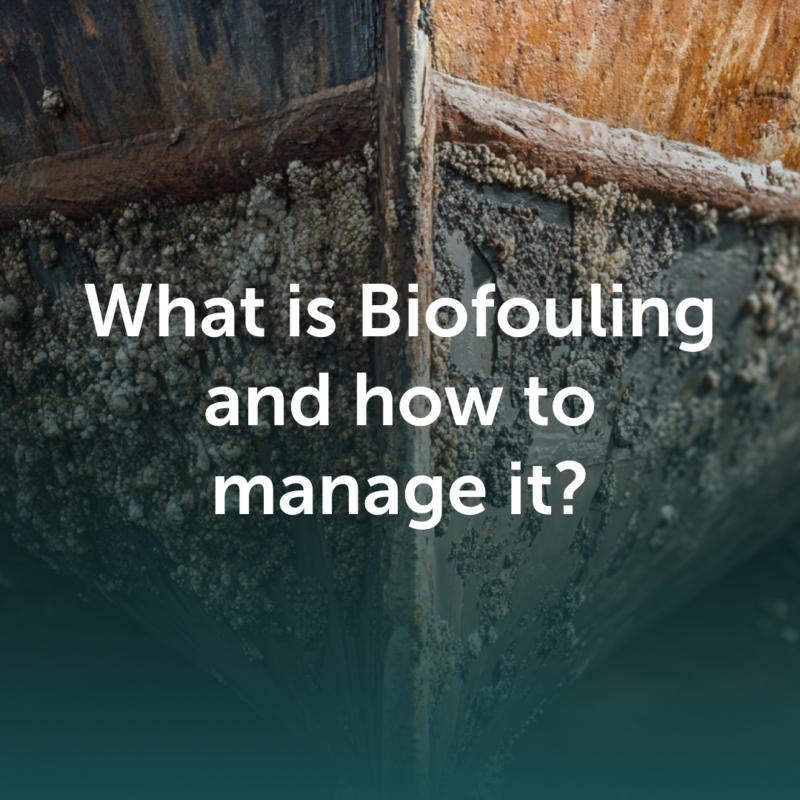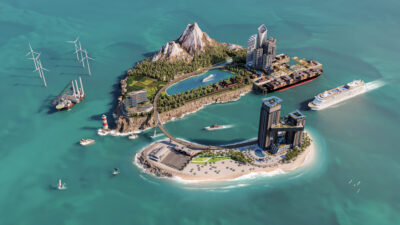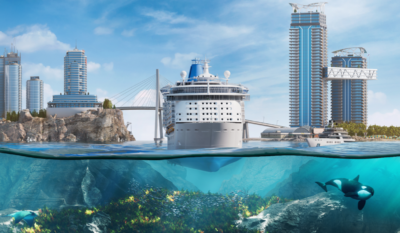What is Biofouling and how to manage it?
Biofouling occurs when marine organisms such as barnacles, polychaetes, and mollusks attach to submerged surfaces, including ship hulls and offshore structures. This natural process begins soon after a vessel enters the water, with microorganisms forming a biofilm that attracts larger fouling species.
Left unmanaged, biofouling reduces vessel efficiency, increases fuel consumption, and accelerates corrosion, leading to higher maintenance costs and environmental concerns. That’s why proactive biofouling management is essential to maintain optimal vessel performance and protect marine ecosystems.

Definition of Biofouling
The International Maritime Organization defines biofouling as the undesirable accumulation of algae, plants, small aquatic animals, bacteria, and microorganisms on the surface of submerged structures such as hulls and other underwater parts of a ship. These marine organisms disrupt the structural integrity of the submerged surface, which reduces the functional efficiency of the entire vessel or component.
Biofouling starts within a day of a vessel’s immersion in water and accelerates rapidly depending on ocean conditions such as water temperature, solar radiation, and salinity. If the fouling organisms find marine environment conditions supporting their growth, they can multiply rapidly and colonize a surface in a matter of weeks. We’ll explain these conditions in detail in this article.
That’s why you need effective biofouling management strategies to prevent and contain marine fouling early before it populates the hull surface and reduces the operational efficiency of your ocean-going and offshore vessels. To understand biofouling exhaustively, let’s explain how fouling takes place step by step.
The Process of Biofouling: How It Happens
Ocean water contains dissolved organic matter (DOM), such as proteins and polysaccharides. Organic matter comes from algae and other particulate organic materials carried by rivers flowing into the ocean. When a ship is submerged in ocean water, an adsorption process of the DOM at the hull surface begins, causing a biofilm (also called a conditioning film) to build up on the hull.
The biofilm formation kickstarts the biofouling process. The biofilm is essentially a slime layer that acts as a habitat for other fouling microorganisms to thrive. This way, more marine fouling easily attach to the conditioning film and progress to form a fouling community that colonizes the entire hull surface. This method of biofouling is called successional fouling.
Successional Fouling: From Microfouling to Macrofouling
As the biofilm stabilizes after formation, single-cell diatoms and bacteria thrive and produce extracellular polymeric substances (EPS). Microfouling or soft-fouling such as marine fungi, protozoa, and algal spores detect the EPS molecules on the hull surface by using sensory stimuli and attach themselves to the hull.
If you don’t eliminate the microfouling at this stage, more complex macrofouling, such as calcareous algae, barnacles, mussels, calcareous tubeworms, and encrusting bryozoans invade and settle on the hull. From this point, there’s no limit to the type of biofouling that can add to the existing fouling community. You can only stop the biofouling process through a full hull cleaning.
Although successional fouling is the more common biofouling process, it’s not the only method. Aggressive fouling organisms such as barnacles can invade a clean hull surface without a fouling history. Additionally, other variables influence the biofouling process in diverse ways. These factors include:
- The marine environment
- Design and construction of the hull
- Maintenance history of a vessel’s hull
- Type of marine growth prevention system used
- Ship operations profile
Common Biofouling Organisms
There are too many biofouling organisms in the ocean water to count. However, we can classify them into two groups: micro-organisms and macro-organisms.
Microorganisms
Microfouling organisms are usually the first fouling agents to attack a submerged surface. Microorganisms are further grouped into two subsets:
- Bacteria and diatoms: These are microscopic organisms that colonize a virgin surface and build a biofilm on it. Fouling diatoms are either pen-shaped or cylindrical, hence the names pennate diatoms and centric diatoms.
- Algae: They typically attach to the biofilm and exist in three forms: green algae (Chlorophyta), red algae (Rhodophyta), and brown algae (Phaeophyta).
Macro-organisms
Macrofouling or hard-fouling organisms are marine invertebrates. They include:
- Mollusks (including squid, oysters, conch, and clams)
- Crustaceans (including crabs, lobsters, and krill)
- Barnacles (include rock barnacles, gooseneck barnacles, wart barnacles, and burrowing barnacles)
- Mussels (including blue mussels, Pacific blue mussels, New Zealand green-lipped mussels, and Mediterranean mussels)
- Sponges
- Corals
Additionally, many other unknown or unspecified small aquatic animals also contribute to hull fouling.
Invasive Biofouling Organisms
Most microfouling and macrofouling organisms occur naturally in ocean water as part of the marine ecosystem. Marine organisms have designated habitats where they get the nutrients, sunlight, and oxygen they need to live and thrive. However, artificial activities in the marine ecosystem introduce invasive aquatic species to new habitats.
The two main ways invasive aquatic species are introduced into new marine environments are through hull fouling and ballast water. Voyaging ships carry ballast water to maintain optimum vessel weight throughout a journey.
However, when ballast water is pumped out into the ocean, it introduces new marine species into that ocean environment. The new species reproduce and form pest populations containing invasive biofouling organisms that contribute to hull fouling.
Similarly, existing fouling organisms on a hull invade new marine habitats that a vessel cruises through. They displace native species and reproduce to form new organisms. The new invasive organisms accelerate hull fouling, especially for offshore vessels that may remain static in a new marine habitat for long periods.
Typical Locations of Biofouling
All submerged parts of a ship, offshore vessel, and marine equipment are susceptible to biofouling. The sheer fact that these parts and equipment come into contact with salty ocean water makes them an automatic candidate for biofouling. Furthermore, most of these parts and equipment are made from steel, composites and aluminum, which have little resistance to biofouling.
Here’s a breakdown of the hot-spot locations for biofouling.
Biofouling on ships
Hulls are the largest submerged parts of a ship. Their wide surface area makes them a big target for biofouling organisms. Take barnacles, for instance. They’re sessile species and filter feeders that get their food from sifting plankton from surrounding water. Because hulls have a wide surface area and experience continuous water flow as a ship cruises, they’re an ideal target for barnacles.
These other biofouling hot spots are:
- Propeller
- External cooling parts
- Bow thrusters
- Boxcoolers
- Sea chest
- Bridge keel
Biofouling on offshore platforms
Offshore platforms are towering steel structures used to support various offshore applications such as oil and gas extraction, ship loading and unloading, and navigation. Most offshore platforms remain static at sea for long periods, allowing fouling organisms to accumulate. Examples of offshore platforms include:
- Drilling barges
- Jack-up rigs
- Semi-submersible rigs
- Drill-ships
- Spar platforms
- Tension leg platforms
- Fixed platforms
Biofouling on offshore platforms substantially affects their structural integrity. For instance, a growth of just 5-10 cm raises the structural load of an offshore platform by about 5.5% to 11.5%. Moreover, the physical removal of existing biofouling, especially on fixed offshore platforms, further weakens their structural integrity.
Biofouling on marine equipment
Marine equipment serves different purposes, such as navigation, marine data collection, underwater transportation, and scuba diving. Examples of marine equipment include:
- Buoys
- Underwater sensors
- Submersibles, such as autonomous underwater vehicles (AUVs), human-occupied vehicles (HOVs), gliders, and remotely operated vehicles (ROVs)
Biofouling reduces the operational efficiency of maritime equipment, particularly submersibles, which often spend long periods on the seafloor conducting scientific analysis.
Environmental Conditions Favoring Biofouling
Due to their complex molecular composition, fouling organisms’ growth depends on their surrounding environmental conditions. These environmental factors favor the growth and spread of marine biofouling organisms.
Warm Ocean Temperatures
Warm sea temperatures accelerate the chemical and microbial metabolism of biofouling organisms. This enhances their reproductive rates, leading to enhanced formation, settlement, and colonization of fouling organisms on a submerged surface.
For instance, algae grow faster and denser when ocean water temperatures rise. As the algal blooms spread on the water surface, they trap heat and make the water below warmer, enabling the growth of more fouling organisms. Thus, a ship, boat, or vessel operating in such a marine environment will experience biofouling more rapidly.
However, extremely high ocean temperatures destroy the biochemical composition of fouling organisms alongside other marine life, slowing down the biofouling rate in that specific marine ecosystem.
Nutrient Availability
Research indicates that the availability of nutrients in ocean water, particularly organic carbon, has the biggest multiplier effect on the biofilm formation rate. The ideal nutrient ratio that accelerates the formation of biofilms on substrates is excess organic carbon and low nitrogen and phosphorus.
Salinity
Biofouling organisms such as ascidians, or sea squirts, thrive in high salinity conditions. Salinity refers to the amount of salt dissolved in ocean water. Rocks from the land deposited into the ocean by rivers and the seafloor are the major sources of dissolved salts in the ocean.
Problems Caused by Biofouling
Biofouling creates several structural, operational, ecological, and economic issues for the maritime industry.
Increased Vessel Drag
As ships and vessels cruise through water, they experience mechanical resistance or friction, dubbed drag. Vessel weight is one of the main factors contributing to vessel drag, among other aspects such as:
- Shape and design of a ship’s hull
- Scratched and abrased hulls
- Surface finish quality
- Inefficient propellers
Fouling organisms increase vessel drag by adding extra weight (as much as 10 tons) to the ship. The added weight from the unwanted biofouling causes a ship to move slower while using more fuel and propulsion force. Considering that fuel costs make up 60% of a ship’s total operational costs, even a slight increase in fuel substantially impacts overall expenses.
Additionally, spending more time than necessary on a voyage leads to lost business opportunities. Competing ships without vessel drag are more efficient, and they profit from your redundancy.
Corrosion
Biofouling marine organisms such as invertebrates promote microbially influenced corrosion of metal structures. Hulls, marine equipment, and offshore vessels are mostly made of steel or aluminum. Even though these materials have excellent corrosion resistance, biofouling organisms such as barnacles colonize their surfaces and compromise their resistance integrity.
Repairing corroded hulls and other surfaces is costly in terms of repair costs and lost business. Additionally, underwater repair for equipment such as drilling rigs is risky and time intensive. In a worst-case scenario, excessive corrosion that goes unrepaired for a long time can cause hull leakages and potentially ground your vessel.
Maintenance and Cleaning Costs
Extensive hull cleaning is the only way to remove existing biofouling. However, hull cleaning, especially for huge ocean-going and offshore vessels, is inconvenient and expensive. And if you don’t invest in a marine growth prevention system, you’ll be forced to clean the hull regularly as biofouling restarts more vigorously after the first clean-up.
Environmental Impact
Biofouling negatively impacts the marine ecosystem, specifically by facilitating the transfer of invasive aquatic species into new marine environments they don’t belong in. These invasive aquatic species disrupt the local ecosystems, rendering some native organisms extinct or displacing them from their original habitat.
What’s the Way Out? Invest in Effective Biofouling Management Strategies
When you make Cathelco your marine antifouling partner, you’ll enjoy full access to our patented ultrasonic antifouling system and address economic and environmental challenges such as increases in CO2 emissions and fuel consumption. Our marine growth prevention systems help you eliminate blockages caused by barnacle and mussel growth in seawater cooling lines. The systems are available for vessels of every size, including mini systems for luxury yachts.
Better still, our impressed current cathodic protection (ICCP) for corrosion protection can lead to significant cost savings for hull maintenance and fuel, thanks to a smooth hull surface. Reach out to our experts to learn how we can help you.


